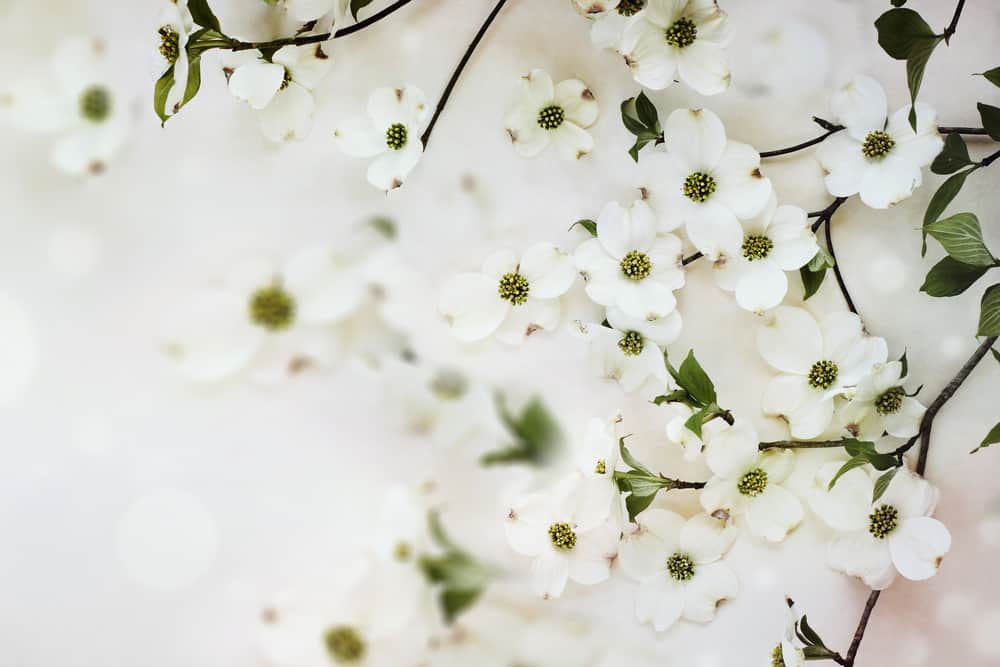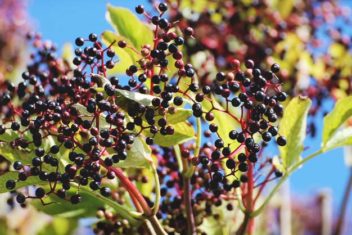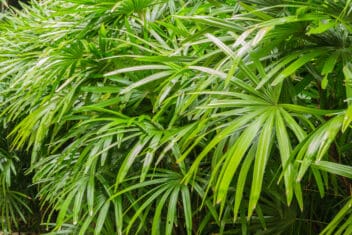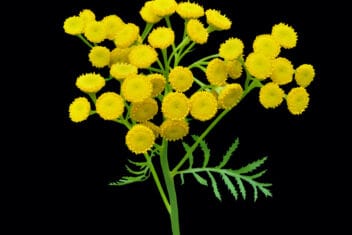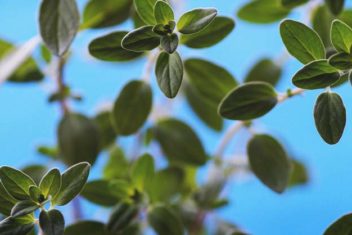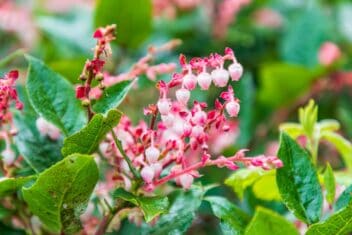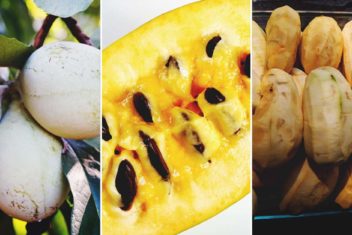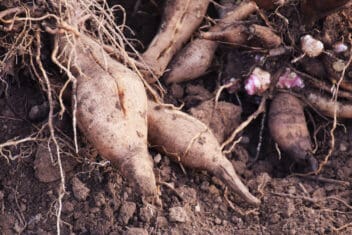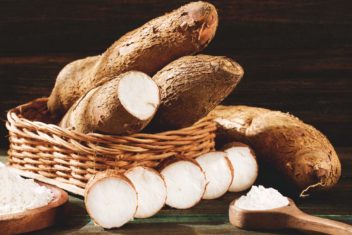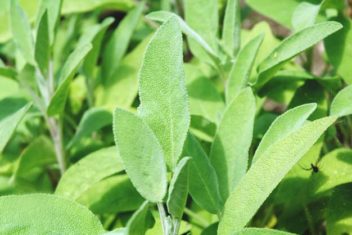Dogwoods come in a vast range of sizes, colors, and shapes, with some featuring pale pink petals or bright orange flowers. Some have red bark that adds winter interest. You can grow them as large shrubs or small trees. There are even small shrubs that work as border plants.
Their beautiful spring display is legendary, and the edible fruits can be absolutely delicious.
Before we go over the details of growing dogwood trees, let’s review some of the most common types of dogwood available.
Varieties of Dogwoods
There are over 45 species of Cornus, all of which are commonly known as dogwoods. These blooming shrubs and trees are great for planting in your garden if you want to sprinkle some easy-to-care-for color into your outdoor space.
Some of the most common dogwoods for home gardens are Cornelian cherries, kousa (or Japanese), native flowering types, and Pacific dogwoods.
Dogwoods grow in USDA Growing Zones
Let’s take a look at some of the great options if you’re interested in growing dogwood trees:
Japanese Dogwood
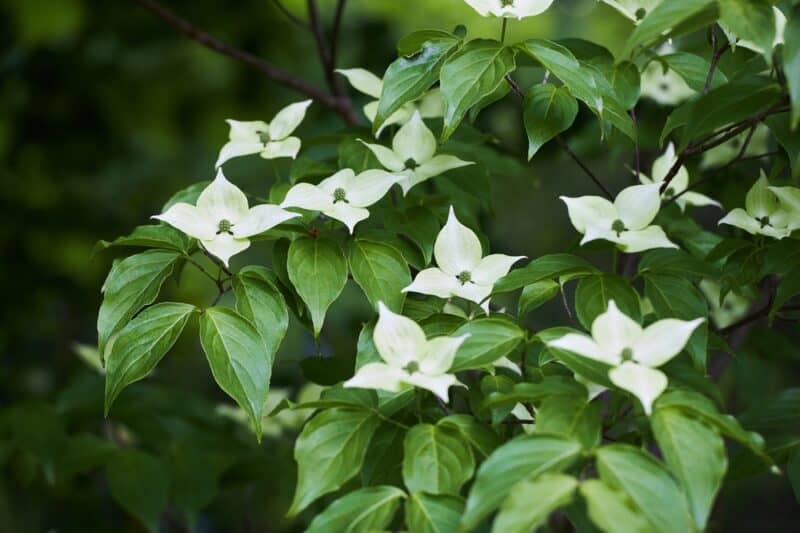
Kousa or Japanese dogwoods (Cornus kousa) puts on an incredible show. In the early spring, bracts that look sort of like leaves emerge, covering the tree in pink or white color. Later, star-like flowers emerge. In the fall, the foliage is a striking bright red.
The Japanese dogwood plant is native to parts of East Asia, including forests in Korea and Japan. You can find people growing dogwood trees in the kousa species across the globe.
These trees can grow up to 30 feet tall with a rounded growth habit that features layered, alternating branches. It grows best in full sun, though it tolerates some afternoon shade. It’s cold and drought-resistant and less susceptible to diseases than some North American natives.
‘Miss Satomi’ features spring-blooming, dark pink blossoms followed by purplish-red fruit. It can grow up to 15 feet tall.
‘Gold Star’ has variegated foliage with yellow splotches.
‘Stellar Pink’ has pink bracts, rather than white ones, in the spring.
Cornelian Cherry
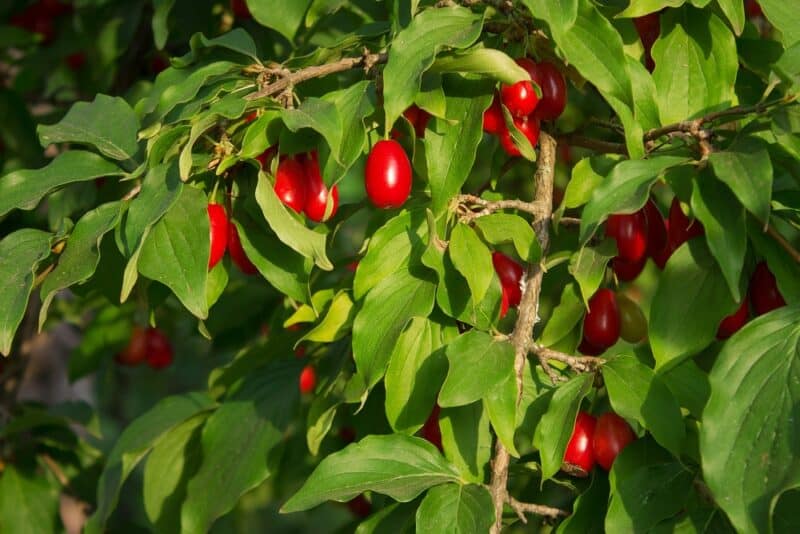
Cornus mas has long leaves and yellow blossoms, setting it apart from some other species in the genus. It blooms extremely early in the spring, followed by red, edible, olive-sized fruits.
It provides four-season interest, with peeling bark in the winter, colorful bracts and flowers in the spring, lush foliage and fruits in the summer, and reddish-purple leaves in the fall.
This slow-growing tree reaches up to 15 feet tall when mature.
‘Nana’ is a tiny cultivar that will only grow to about three feet tall. ‘Alba’ features white fruits, and ‘Aurea’ has golden leaves.
Pacific Dogwood
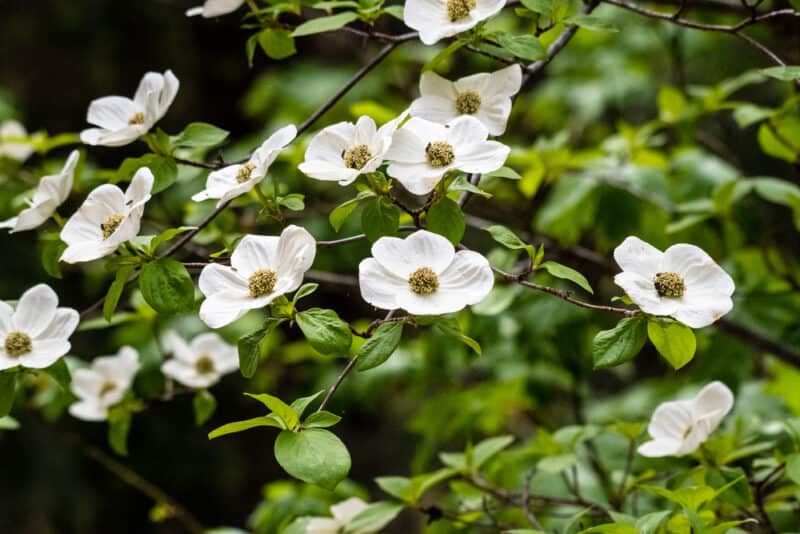
Pacific dogwoods (Cornus nuttallii) are native throughout the North American Pacific Coast. It’s popular both as a cultivated garden plant and for its wood.
These trees are large and can grow up to 65 feet tall, with brilliant fall foliage. It’s both shade tolerant and able to handle wet, poorly-draining soil.
Sadly, both native populations and cultivated trees have been declining because of the arrival of anthracnose caused by the invasive fungus Discula destructive. If you’re growing dogwood trees, you need to be aware of this disease.
‘Gold Spot’ has eye-catching yellow and green foliage with large white flowers. ‘North Star’ has exceptionally bright red leaves in the fall and flowers that are larger than the species.
Common Dogwood
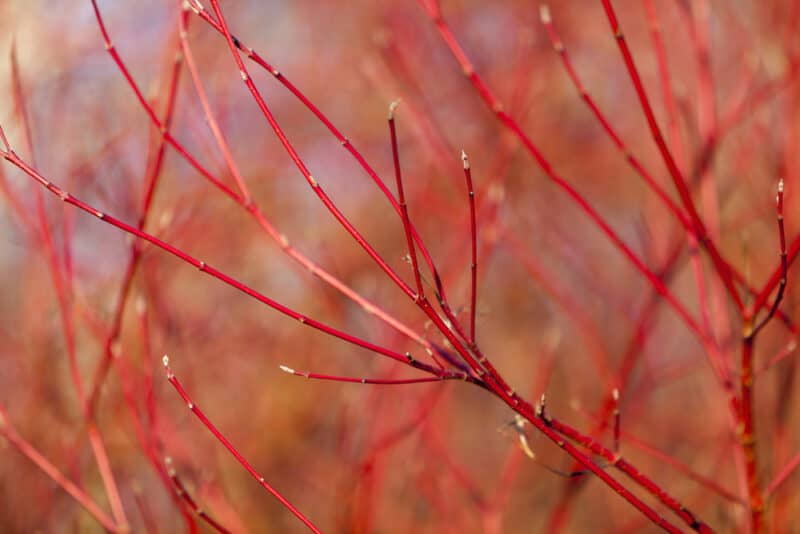
Native to Asia and Europe, common dogwoods (Cornus sanguinea) are shrubby plants that can reach up to 15 feet tall. They’re notable for their bright red stems and branches, which is why they’re also known as bloodtwig bushes.
As the wood matures, it turns green.
The ‘Midwinter Fire’ cultivar is small and great for smaller homesteads with limited space. It only grows six feet tall. The twigs are particularly bright red. During spring, white flowers create a lovely contrast with red stems.
Giant Dogwood
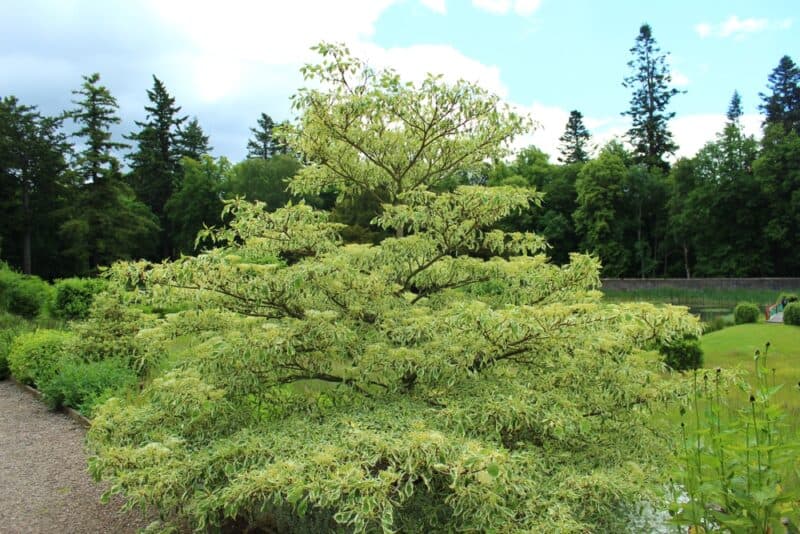
Giant dogwoods (Cornus controversy) grow up to 50 feet tall and half as wide. It’s native to Asia and features bright white blossoms in the early spring.
‘Variegata,’ sometimes called the wedding cake tree, is another lovely cultivar, growing up to 30 feet tall. In spring, masses of white flowers pop up, and the leaves are green with a white margin. In Fall, the white parts of the plant will turn yellow.
The tree gets its name from the branches, which grow in symmetrical layers, like tiers on a wedding cake.
‘June Snow’ features stunning red and orange leaves in the fall.
Planting Dogwoods
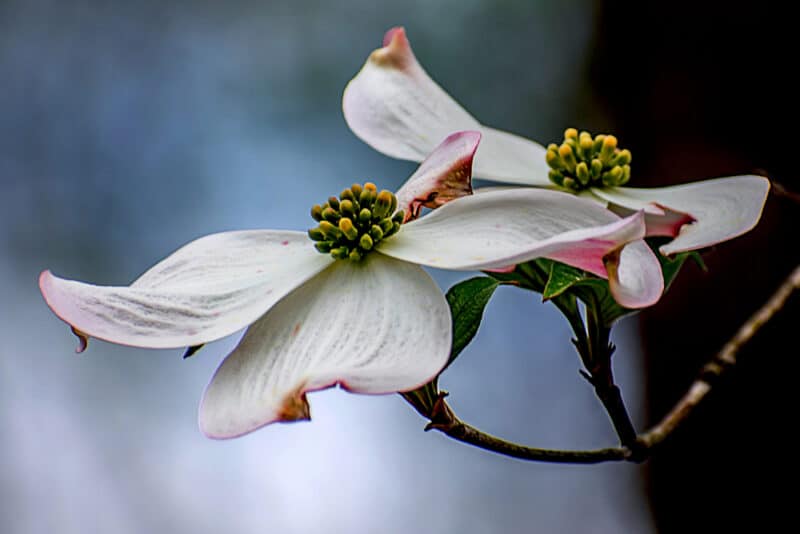
Any dogwood can be planted in fall or early spring, depending on your time. It’s important to note that the leaves on dogwood are sensitive to heat and can burn easily, so plant them in partial shade if you live in a region that gets hot in the summer.
You should also avoid planting your dogwood in summer when the temperatures are high.
Most people growing dogwood trees place them in a partially shaded area with protection during the hot part of the day. Dogwood can take a while to establish in the ground, so you must be patient. Those flowers will show up soon enough.
You will have to increase the watering schedule if you plant in spring, as the weather will be warming at this time of year, and the trees need extra water to stay happy. After a few years, the plants should be established, and you can reduce the watering schedule.
It’s crucial to have well-draining soil when planting and encouraging your tree to establish roots.
Caring Tips for Dogwood
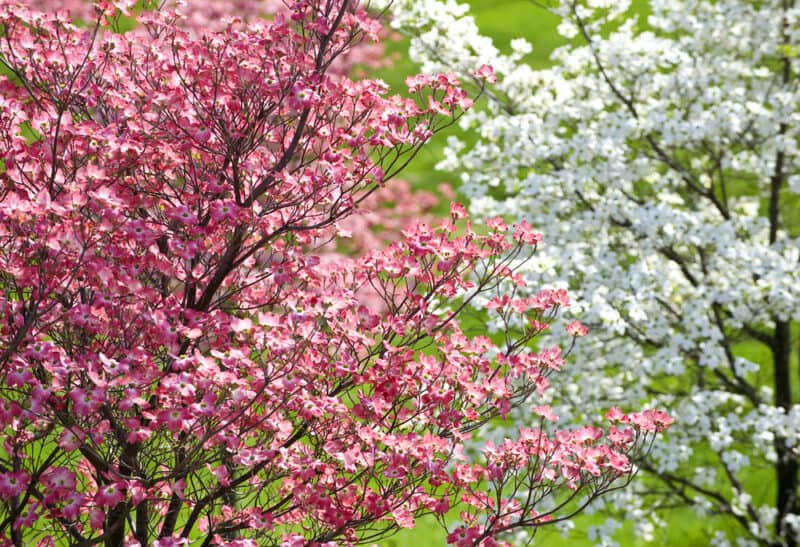
As mentioned earlier, the best soil for growing dogwood trees is well-draining. Dogwoods can grow in neutral to alkaline soils. Add well-rotted compost to the earth to increase the soil’s water retention and drainage. Compost also gives soil an extra boost of nutrients.
Watering plays a key role in growing dogwood trees. Once it’s established after the first years, you can limit the watering to dry spells. You should always check that the soil is moist by testing with your finger.
If the top few inches are moist (but not wet), you know it’s wet enough. If the leaves wilt, there’s probably too much water. Once the top few inches dry out, it’s time to add water.
Add a thick layer of organic mulch around the tree to help it retain moisture.
Fertilize in the spring and summer with a mild, balanced fertilizer. It helps to test your soil once a year to determine if your soil is deficient in anything and if you need to add additional nutrients.
Pruning Techniques
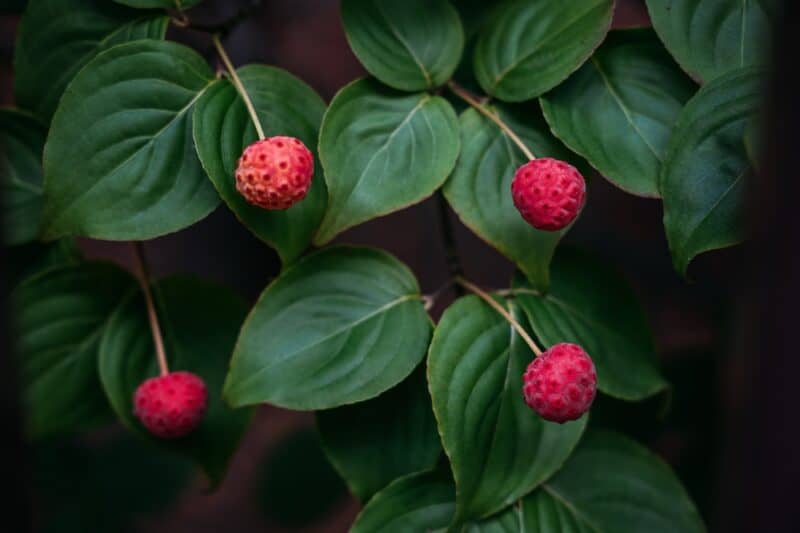
Dogwoods can grow tall and wide, so prioritize pruning to keep them at a manageable size. Wait until late fall or late winter to prune. This is the best time, as it’s when the plant is dormant.
If you don’t feel confident pruning the plant, you can hire a local tree trimming service. Dogwoods don’t like excessive pruning.
First, remove any dead, diseased, crossing, or deformed branches. Then target small branches to create a pleasing shape.
Common Pests and Diseases
Pests and diseases are part of growing plants. While you may never need to address them, be prepared for these issues when growing dogwood trees, so you know how to treat them if they occur.
Anthracnose
The most common disease to watch out for with dogwood plants is dogwood anthracnose.
Dogwood anthracnose is a type of fungal disease that can attack your dogwood. The first signs of the disease are discolored leaves and smaller branches. To begin with, you might overlook the issue, but if this condition is left untreated, with will spread to the whole plant.
To learn how to address this devastating disease, consider visiting our guide.
Powdery Mildew
Another common disease is powdery mildew, which appears as white powder-like fungal spores on the leaves and branches. Our guide to powdery mildew will help set you straight.
Dogwood Borer
Dogwood borer (Synanthedon scitula) is a moth whose larvae burrow into the layer of the cambium layer of the plant.
Dogwood borer pests can prevent nutrients from reaching your plant and reduce its water intake. Eventually, dogwood borers can kill the branches and destroy the tree’s health.
Remove infested branches and encourage natural predators like birds and parasitic wasps. Insecticides usually aren’t effective.
Scale
Scale insects are the other pests that can affect your dogwood plants. Even though these pests are small, they can be impactful to the overall health of your dogwood.
A sticky substance called honeydew and sooty mold are common signs of scale insects. If you see these symptoms in your plant, visit our guide to learn how to address the problem.
How to Use Dogwood Fruits and Leaves
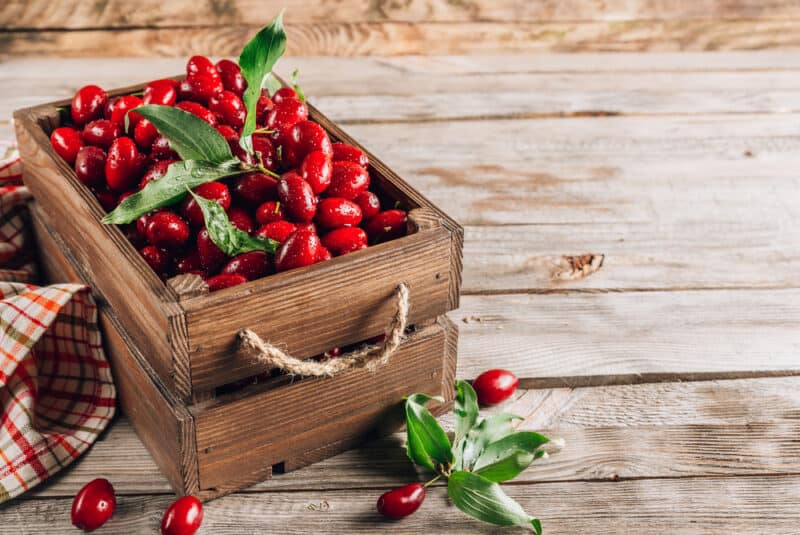
Many species of dogwoods grow edible fruits in the summertime.
If you want to make something indulgent but you’re tired of strawberries or raspberries, you should try harvesting your own dogwood berries.
The fruits from the Japanese dogwood plants are known to help boost your immune system and help treat inflammatory bowel diseases. Cornelian cherries are also tasty. All other species are technically edible, but they don’t always taste good.
There are several ways to eat the berries and leaves. Here are some ways you can enjoy your harvest:
- Raw berries as a snack
- Ground the fruits into a jam or jelly
- Leaves can be brewed into a tea
- Make wine with the berries
Dogwood frozen yogurt is extremely tasty. All you need to make this is:
- 1 cup of dogwood berries
- 4 tsp of sugar
- ½ cup of milk or yogurt
- lemon zest
- mint leaves for garnish
Once you have the berries, cook them with the sugar until combined and soft. Add lemon zest. Freeze the yogurt for 1-2 hours. Remove from the freezer and top with the berries and some chopped mint leaves.
